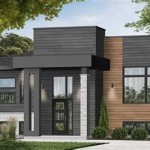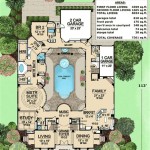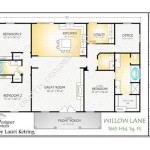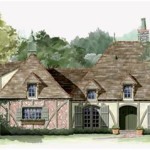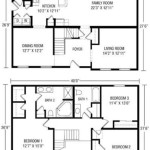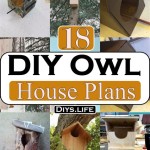Homes On Stilts: Unique House Plans For Elevated Living
The concept of building homes on stilts, also referred to as pile dwellings, has a history as rich and diverse as the environments in which they are found. Originally conceived out of necessity, these elevated structures provided crucial protection from flooding, pests, and wildlife in vulnerable regions. Over time, the architectural ingenuity behind stilt houses evolved, transforming them from basic survival shelters into aesthetically pleasing and structurally sound residences that are now sought after for their unique design and functional benefits. Today, homes on stilts are not only practical solutions for challenging landscapes, but they also represent a distinctive architectural style offering a blend of form and function that appeals to a broad range of homeowners.
The design and construction of stilt houses have become increasingly sophisticated, integrating modern engineering principles and sustainable materials. This has led to the development of unique house plans specifically tailored for elevated living, incorporating features that maximize space utilization, enhance natural light, and provide panoramic views. The elevated living room represents a central element of these designs, offering a comfortable and visually appealing space that seamlessly integrates with the surrounding environment. This article will delve into the various aspects of stilt house design, focusing particularly on the unique house plans that prioritize an elevated living room, and exploring the advantages, considerations, and design possibilities associated with this architectural style.
Advantages of Elevated Living and Stilt House Design
One of the primary advantages of homes on stilts is their ability to mitigate the risks associated with flooding. By elevating the main living area above the potential flood line, these structures safeguard the occupants and their belongings from water damage. In coastal areas and regions prone to heavy rainfall, this protection is invaluable, offering peace of mind and reducing the financial burden of flood-related repairs and insurance costs. Stilt houses also provide protection against storm surges and high tides, making them a resilient choice for coastal communities facing the increasing threat of climate change.
Beyond flood protection, stilt houses offer superior ventilation and cooling. The elevated design allows for natural airflow beneath the structure, reducing the potential for moisture buildup and creating a cooler interior environment. This natural ventilation can significantly decrease reliance on air conditioning, resulting in energy savings and a more sustainable lifestyle. In humid climates, the improved airflow also helps to reduce the risk of mold and mildew growth, further enhancing indoor air quality and creating a healthier living environment.
Stilt houses provide effective pest control. The elevation disrupts the pathways of ground-dwelling pests such as rodents, insects, and snakes, making it more difficult for them to access the living space. This can minimize the need for chemical pest control measures and create a more hygienic living environment, especially in areas where these pests are prevalent. The elevated design also makes it easier to inspect and maintain the underside of the house, allowing for early detection and treatment of any pest infestations.
The unique architectural design of stilt houses provides the opportunity for enhanced views. By elevating the living space, homeowners can enjoy panoramic vistas of the surrounding landscape, whether it be a waterfront, forest, or cityscape. This visual connection to nature can contribute to a sense of tranquility and well-being, creating a more enjoyable and relaxing living environment. The elevated perspective also offers increased privacy, as the house is less exposed to pedestrian traffic and street-level noise.
Key Design Considerations for Stilt House Plans with Elevated Living Rooms
When designing a stilt house, the foundation is of paramount importance. The stilts or piles must be strong enough to support the weight of the structure and withstand the environmental forces acting upon it, such as wind, waves, and seismic activity. The type of soil and the depth of the water table are crucial considerations in determining the foundation design. Typically, reinforced concrete, timber, or steel piles are used, depending on the specific site conditions and the structural requirements of the house. The spacing and arrangement of the piles are also carefully calculated to ensure stability and prevent settlement.
The structural integrity of the stilt house is crucial for safety and longevity. The frame must be designed to resist lateral forces, such as wind and earthquakes. Bracing is often used to provide additional support and prevent swaying. The connection between the piles and the frame is a critical detail that must be carefully engineered to ensure a secure and durable connection. The materials used in the construction of the frame must be weather-resistant and capable of withstanding the harsh environmental conditions to which the stilt house is exposed.
Accessibility is another important consideration in stilt house design. Access to the elevated living space is typically provided by stairs, ramps, or elevators. The design of these access features must comply with building codes and accessibility standards, especially if the house is intended for people with mobility limitations. The placement of the access points should be carefully considered to maximize convenience and minimize the impact on the surrounding landscape. The width, slope, and handrails of stairs and ramps must be designed to ensure safety and ease of use.
The space beneath the stilt house can be utilized for various purposes, such as parking, storage, or recreational space. The design of this undercroft area should be carefully considered to maximize its functionality and minimize its environmental impact. The ground beneath the house can be landscaped to create a more aesthetically pleasing environment. Proper drainage is essential to prevent water from accumulating under the house, which can lead to moisture problems and pest infestations. The undercroft area can also be enclosed to create a sheltered space, but this must be done in a way that does not impede airflow or compromise the structural integrity of the house.
Integrating the elevated living room with the surrounding environment is a key design objective. Large windows and sliding doors can be used to maximize natural light and provide panoramic views. Decks and balconies can extend the living space outdoors, creating a seamless transition between the interior and exterior. The orientation of the house should be carefully considered to take advantage of prevailing winds and sunlight. Landscaping can be used to screen the house from neighboring properties and create a more private and secluded environment. The choice of materials and colors should be sensitive to the surrounding environment, creating a harmonious and visually appealing design.
Unique House Plan Elements for Elevated Living Rooms
Open-plan living is a popular design choice for stilt houses, as it maximizes space utilization and creates a sense of spaciousness. The elevated living room can be seamlessly integrated with the dining area and kitchen, creating a large, multi-functional space that is ideal for entertaining and family gatherings. The open-plan layout also allows for better natural light distribution and cross-ventilation, further enhancing the comfort and energy efficiency of the house. Strategic placement of furniture and fixtures can help to define different zones within the open-plan space, creating a sense of order and organization.
Incorporating large windows and sliding glass doors is essential for maximizing natural light and providing panoramic views. These features not only brighten the interior space but also create a strong visual connection to the surrounding environment. The windows and doors should be energy-efficient to minimize heat gain and loss. Skylights can also be used to bring in additional natural light, especially in areas where windows are not feasible. The placement and size of windows and doors should be carefully considered to optimize views and minimize glare.
Utilizing decks and balconies to extend the living space outdoors is another key design element. Decks and balconies provide a perfect place to relax, entertain, or enjoy the surrounding scenery. They can also be used to create outdoor dining areas or lounging spaces. The design of the decks and balconies should be integrated with the overall design of the house, creating a seamless transition between the interior and exterior. The materials used for the decks and balconies should be durable and weather-resistant.
Integrating sustainable design principles into stilt house plans is becoming increasingly important. This includes using environmentally friendly materials, incorporating energy-efficient appliances and systems, and minimizing water consumption. Solar panels can be installed on the roof to generate electricity, and rainwater harvesting systems can be used to collect and store water for irrigation and other non-potable uses. The design of the house should also consider passive solar heating and cooling techniques to reduce reliance on mechanical systems. Sustainable design not only reduces the environmental impact of the house but also can result in long-term cost savings.
Customization is a key aspect of stilt house design. Homeowners can personalize their house plans to reflect their individual needs and preferences. This includes choosing the size and layout of the rooms, selecting the materials and finishes, and incorporating custom features such as built-in furniture, specialized storage solutions, and unique architectural details. Working with an experienced architect or designer is essential to ensure that the customized house plan is structurally sound, aesthetically pleasing, and functional for the homeowner's lifestyle.

Online Design Concept Multi Family Stilt Piling Elevated Duplex W 2 Bedrooms Baths Living Room Dining Kitchen And Foyer Collection

Piling Pier Stilt Houses Hurricane Coastal Home Plans

Elevated Piling And Stilt House Plans Coastal From Home

A Guide To Your Coastal Stilt Home

Plan 765044twn Coastal Stilt House With Elevator And Second Level Living Space

Elevated Piling And Stilt House Plans Coastal From Home

Online Stilt Piling House Plan 3 Bedrooms 2 Baths 1360 Sq Ft Topsider Homes Pge 0308

5 Stunning Florida Stilt Homes That Survived Every Hurricane

House Plan Ch539

Modern Stilt House Archives Living Asean Inspiring Tropical Lifestyle
Related Posts

